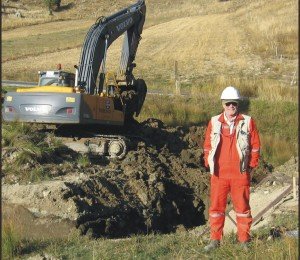
Environmental Compliance Experience
CERCLA Railyard Study
Union Pacific Railroad
Developed a methodology to derive remedial action objectives (RAOs) that were protective of groundwater for halogenated and non-halogenated volatile organic compounds in vadose zone soil (primarily in an old landfill area).
CERCLA Scoping Document
Private Client
Prepared a soil scoping document for a 10,000-acre multisource site that contained over 230 potential source acres where over 100 different chemicals may have been released to the environment. In the scoping report data needs and operable units were identified and a preliminary evaluation of remedial technologies was performed.
Environmental Compliance Evaluation
U.S. Department of Energy
An environmental audit to evaluate the Brookhaven National Laboratory (BNL) in compliance with environmental regulations and permit requirements. Brookhaven Laboratory has been nominated for inclusion on the National Priorities List under Superfund legislation. The environmental evaluation was conducted to assist DOE and BNL in preparation for a rigorous “tiger team” audit of the facility performed in 1990.
Groundwater Flow & Contaminant Transport Modeling, Wetland Issues
Bureau of Land Management
Managed and performed groundwater flow and contaminant transport modeling for the BLM using MODFLOW and MT3D to evaluate groundwater conditions from proposed groundwater withdrawals in Honey Lake Valley for delivery to the Reno/Sparks metropolitan area. Assessed the impacts to wetlands from the proposed groundwater drawdown due to the water transfer.
Groundwater Sampling of Level B Superfund Facility
Private Client
Participated in groundwater sampling of Level B Superfund facility for highly toxic VOC pesticide compounds. Project involved use of air respirators, cordoned off decontamination zones and use of CLP approved laboratory for chemical analyses.
Environmental Compliance Audit
U.S. Department of Energy
Performed an environmental compliance audit of the Argonne National Laboratory for compliance with federal, state and local environmental regulations. Key issues encountered during the audit were appropriate landfill operation practices, RCRA storage and record-keeping practices, and handling and storage of high-level radioactive wastes.
Landfill Characterization & Permitting
Colusa County, CA
Managed landfill characterization and permitting for Class III county landfills to meet Title 23, Chapter 15 permitting requirements. Work included landfill monitoring, quarterly report preparation, developing revised monitoring requirements.
Compliance with Regulations (existing landfill)
Private Client
Managed and designed interdisciplinary study to assist client in complying with Subchapter 15 regulations for permitting an existing landfill. Study included groundwater characterization, seismic hazard analysis, geotechnical evaluation of landfill structures, and hydrologic analysis.
Closure Plans (California Integrated Waste Management Board)
Lassen County, CA
Project manager for preparation of closure plans to meet California Integrated Waste Management Board requirements. Prepared a closure plan guidance document for this small rural landfill in the arid eastern Sierra Nevada.
Site Characterization, Feasibility Study & Remedial Action Plan
Private Client
Site characterization, feasibility study and remedial action plan for a three square mile rocket manufacturing site. Analyzed hydrogeologic system and recommended VES for VOCs and augmented bio-remediation for TPHD sites. Designed hydraulics for augmented bioremediation system employed.
Work Plan for Remedial Investigation/Feasibility Study
Union Pacific Railroad
Prepared a work plan for the RI/FS that emphasized a risk-based approach and utilized the streamlining attributes of the EPA SACM (Superfund Accelerated Cleanup Model) to reduce the level of effort necessary to complete the work. Through negotiation, EPA accepted the approach and work plan, including permitting the client to conduct the risk assessment. Chemicals of potential concern at this site included halogenated and non-halogenated VOCs, TPH and potentially associated PAHs, and chromium.
Work Plan for Remedial Investigation/Feasibility Study
Private Client
Prepared an RI/FS work plan and managed all aspects of the project for a large bus facility. Recommended bioremediation for petroleum compounds in soil and obtained all required permits.
Work Plan for Remedial Investigation/Feasibility Study
Private Client
Managed investigation and prepared the feasibility study for halogenated hydrocarbon occurrence in fractured bedrock and alluvium near West Lake, California.
Water Supply Location
Private Client
Prospected and located a water supply to be used in the closure of a landfill located in the mountains adjacent to Bakersfield. Drilled and designed a deep well (1,000 feet) that produced a sustained yield of 750 gallons per minute from fractured siltstone.

